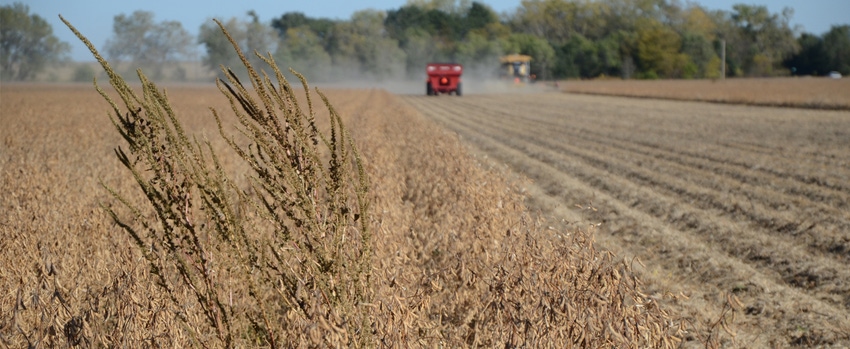September 24, 2021

When the combines are about ready to roll, or are getting started, there are usually three big issues we think about: How are yields doing, how is our equipment holding up, and what is the weather forecast? If we like the answers we get to those questions, then things are likely going well enough that we can add another task to the long list we have in the fall — scouting from the combine.
Sure, what's done is done for this year, so you have a valid question with, "What good will scouting do us now?" Taking notes on anything out of the ordinary we see this fall can help out in planning for future crops. We'll cover a few examples, and with those in mind, you can probably think of other things to watch for this fall.
Watch for weed escapes
When I worked in retail, the most common question phoned in from the combine was, "what is this weed that escaped and what can we do about it next year?" Combine scouting is an excellent way to evaluate your weed management plans. Hopefully the notes you take will all say, "The fields were clean," but that isn't always the case. Finding weed escapes and identifying what you are dealing with will be helpful in planning future weed management plans. More than a few times, clients have found new weed species, or the beginning stages of herbicide-resistant weeds in their fields — and got a head start on managing them with scouting and taking good notes at harvesttime.
If you come across some unexpected weed patches, take a break from the combine cab and get some good pictures of the weeds in question, including remaining leaves, stems and seed heads. Grab several samples of entire plants, put them in a paper bag and get them to your ag chem dealer for help with identification. Share the GPS coordinates of the area in question with them as well; sometimes a trip to see what they are dealing with in person helps.
Other problems to watch
We may also come across some areas of diseases that we didn't see earlier in the season. Sometimes there are enough tell-tale signs of something amiss on our bean plants, even after they have lost most of their leaves to know that something was going on. Fall can be a decent time to take note of beans that just don't look right — whether they are off color, stunted or give some other clue that they struggled compared to other areas of the field. Grab a few plant samples for your agronomist to look at just in case there are any clues for them to see. Comparing yield maps with your suspected disease areas can help determine how widespread an issue may be, so drop a GPS pin or take note of the coordinates.
Other odd things can show up at harvest and be seen more readily from the higher vantage point of the combine cab that may not have been as easy to spot earlier in the season. Erosion patterns, ditches of various sizes and terrace blowouts come to mind. Occasionally, tillage or traffic patterns will show up around harvesttime and can be addressed after harvest or next spring. Sometimes, we'll find bean varieties that have issues with lodging or shattering and take note of that for future seed selection.
Take good notes
With any of the issues mentioned above or others that you think of or run across, along with taking a few notes and logging the GPS coordinates, it's worth mentioning again that it may be helpful to take a quick break from the combine cab. If you run across something that you can't quite identify, take some good-quality pictures — and with weeds, for example, grab some samples of entire plants if possible. With about any plant sample, it's better to keep it in a paper bag versus plastic, especially if it gets left in the cab an extra day or two.
There is plenty going on at harvesttime, so it isn't often easy to take a few minutes to make notes, take pictures or grab samples … but the information you gather on an issue this fall may put you ahead of the game next growing season. Good luck this fall. Stay safe, and I hope you find good yields.
McGrath is an Iowa State University extension field agronomist and On-farm Research and Extension coordinator for ISU's Iowa Soybean Research Center.
About the Author(s)
You May Also Like






